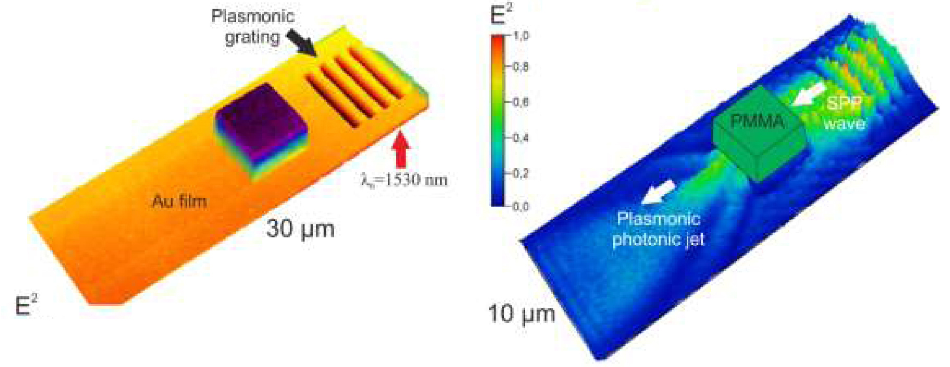Jun 10 2020
In collaboration with Danish and Russian research teams, researchers at Tomsk Polytechnic University have experimentally confirmed a plasmonic nanojet effect that was predicted earlier in practice.
 Visualization of plasmon nanojet. Image Credit: Tomsk Polytechnic University.
Visualization of plasmon nanojet. Image Credit: Tomsk Polytechnic University.
The researchers used a simple method to focus surface plasmon waves into a jet and imaged it using a microscope. In the coming years, the plasmon compression effect can render optical electronics competitive and promote the development of an optical computer. The research has been reported in Optics Letters.
Researchers across the globe have been focusing on optical-radiation-based computer technology. Instead of electric current, light is used to work and transfer information.
When compared to the already existing fastest machines, optical computers could be even faster. But at present, these developments are still untapped. One of the main challenges is the miniaturization of photonic elements as their dimensions still tend to be larger compared to those of their electronic equivalents.
“The logical elements of conventional modern processors are tens of micrometers in size. Optical electronics can become competitive provided that we could compress light to a nanoscale,” stated Igor Minin, project manager, professor of the TPU Division for Electronic Engineering.
This issue can be solved if we come from photons to surface plasmon polaritons that are special electromagnetic waves able to propagate along the boundary of metal and air or a dielectric. Earlier, we theoretically predicted the implementation of a plasmonic nanojet effect and now we have managed to prove it experimentally.
Igor Minin, Project Manager and Professor, Division for Electronic Engineering, Tomsk Polytechnic University
A thin film of gold was used for the experiments. A 5 x 5 μm2 particle of dielectric material, obtained by the Danish researchers, was placed on its surface for a telecommunication wavelength. The particle served as a microlens that could focus plasmons in the form of a nanoscale jet in a very small area.
A microscope at the Moscow Institute of Physics and Technology was used to capture the plasmon nanojet.
Unlike three-dimensional photon jet (the so-called photon nanostructure), plasmon jet is two-dimensional. Its dimensions are smaller, thus enabling future devices based on this effect to become more compact. Moreover,electromagnetic radiation can be localized in a very small area.
Igor Minin, Project Manager and Professor, Division for Electronic Engineering, Tomsk Polytechnic University
“The simplicity of obtaining localized plasmon beams provides ample opportunities for their practical application, for instance, in superresolution microscopes, for the creation of biosensors, and in biological studies where molecular control is required. We have published just the first of a series of planned experimental results,” added Igor Minin.
The research was performed in collaboration with scientists from the Moscow Institute of Physics and Technology, the Institute of Microwave Semiconductor Electronics of the Russian Academy of Sciences, the Danish Technical University, and Tomsk State University. The study was funded by a grant from the Russian Foundation for Basic Research.
Journal Reference:
Minin, I.V., et al. (2020) Plasmonic nanojet: an experimental demonstration. Optics Letters. doi.org/10.1364/OL.391861.